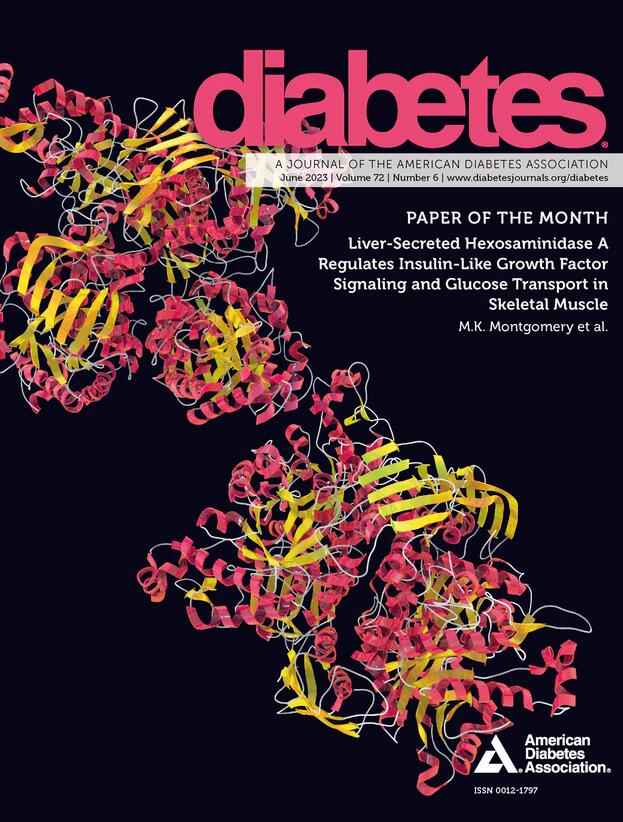1514-P: Presentation of Diabetic Ketoacidosis (DKA) at the Time of Diagnosis of Type 1 Diabetes Mellitus (T1DM) by Race and Ethnicity in a Large Integrated Health Care System
IF 6.2
1区 医学
Q1 ENDOCRINOLOGY & METABOLISM
引用次数: 0
Abstract
Introduction and Objective: DKA at the time of first presentation of T1DM is preventable. The aim of this study was to determine the proportion of individuals with a new onset T1DM, by race and ethnicity, presenting with DKA in a large integrated healthcare system based in Northern California (Sutter Health). Methods: ICD-9 and ICD-10 codes were used to identify adults and children with DKA one month either side of a new diagnosis of T1DM, between January 2016 and September 2024. T1DM cases were identified using prescription for insulin and relevant codes in the electronic health record problem list, or billing data. Testing for the difference in proportion of T1DM patients with DKA were made using the Pearson Chi-Square test. Results: Of 10,956 new T1DM patients, 699 (6.4%) had a co-diagnosis of DKA within one month of a first diagnosis of T1DM. Rates of T1DM presenting with DKA were different by race/ethnicity (p<0.0001) comparing White (5.9%) vs Hispanic (7.8%), Black (10.2%), and Asian (6.6%) patients. Across age groups, the rate of DKA within one month of a first diagnosis of T1DM was highest among those aged 18-25 years (p<0.0001). Conclusion: The risk of DKA at the first presentation of T1DM varies by race and ethnicity. As DKA is preventable, greater efforts are required to reduce this disproportionate risk especially for communities of color. Disclosure S. Mudiganti: None. P. Kenkare: None. D. Kerr: None.1514-P:在一个大型综合医疗保健系统中,按种族和民族诊断1型糖尿病(T1DM)时糖尿病酮症酸中毒(DKA)的表现
简介与目的:T1DM首次出现时的DKA是可以预防的。本研究的目的是确定新发T1DM个体的比例,按种族和民族,在北加州(Sutter Health)的大型综合医疗保健系统中出现DKA。方法:使用ICD-9和ICD-10代码对2016年1月至2024年9月期间新诊断为T1DM的成人和儿童进行DKA鉴定。使用胰岛素处方和电子健康记录问题清单或账单数据中的相关代码确定T1DM病例。使用Pearson卡方检验检验T1DM患者合并DKA比例的差异。结果:在10956例新发T1DM患者中,699例(6.4%)在首次诊断T1DM的一个月内合并了DKA。与白人(5.9%)、西班牙裔(7.8%)、黑人(10.2%)和亚洲(6.6%)患者相比,T1DM合并DKA的发生率因种族/民族而异(p<0.0001)。在各年龄组中,首次诊断T1DM后一个月内DKA的发生率在18-25岁的人群中最高(p<0.0001)。结论:首次出现T1DM时发生DKA的风险因种族和民族而异。由于DKA是可以预防的,因此需要更大的努力来减少这种不成比例的风险,特别是对有色人种社区。S. Mudiganti:没有。P.肯肯:没有。克尔:没有。
本文章由计算机程序翻译,如有差异,请以英文原文为准。
求助全文
约1分钟内获得全文
求助全文
来源期刊

Diabetes
医学-内分泌学与代谢
CiteScore
12.50
自引率
2.60%
发文量
1968
审稿时长
1 months
期刊介绍:
Diabetes is a scientific journal that publishes original research exploring the physiological and pathophysiological aspects of diabetes mellitus. We encourage submissions of manuscripts pertaining to laboratory, animal, or human research, covering a wide range of topics. Our primary focus is on investigative reports investigating various aspects such as the development and progression of diabetes, along with its associated complications. We also welcome studies delving into normal and pathological pancreatic islet function and intermediary metabolism, as well as exploring the mechanisms of drug and hormone action from a pharmacological perspective. Additionally, we encourage submissions that delve into the biochemical and molecular aspects of both normal and abnormal biological processes.
However, it is important to note that we do not publish studies relating to diabetes education or the application of accepted therapeutic and diagnostic approaches to patients with diabetes mellitus. Our aim is to provide a platform for research that contributes to advancing our understanding of the underlying mechanisms and processes of diabetes.
 求助内容:
求助内容: 应助结果提醒方式:
应助结果提醒方式:


